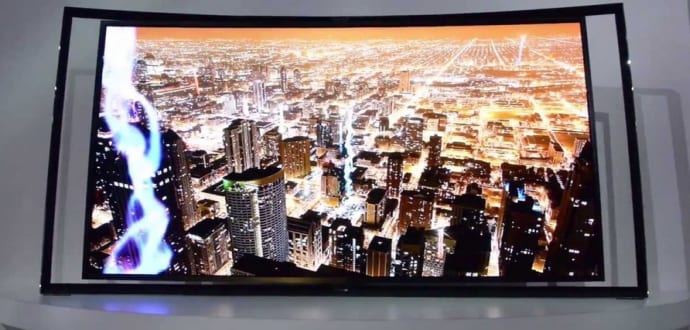Do you know the difference between PMOLED and AMOLED?
OLED is a new technology for a light-emitting diode containing thin flexible sheets of an organic electroluminescent material, used for visual displays. They do not require any backlight and filtering systems that are used in LCDs.
Further, there are two types of OLED displays: Passive-Matrix (PMOLED) and Active-Matrix (AMOLED). The difference is in the driving electronics – it can be either Passive Matrix (PM) or Active Matrix (AM).
In this article, we will find out the difference in both the technology and their applications.
A PMOLED display uses a simple control scheme in which you control each row (or line) in the display one after the other (one at a time). Most of the time, the pixels in each line are actually off, as PMOLED electronics do not have a storage capacitor. You need to use more voltage to make them brighter to make up for this. For instance, if you have 10 lines, then you have to make the one line that is on 10 times as bright.
However, PMOLEDs are not competent and the OLED materials suffer from lower lifetime (due to the high voltage needed), despite the fact that they are easy (and cheap) to produce. Also, the resolution and size (the more lines you have, the more voltage you have to use) are restricted in PMOLED displays. Usually, PMOLED displays are small (typically up to 3″) and are utilized to show small icons or character data: they are being used in mobile phone sub displays, MP3 players, etc.
An AMOLED (Active-Matrix OLED) is driven by a TFT which has a storage capacitor that preserves the line pixel states, and so enables large size (and large resolution) displays. AMOLEDs have no limitations on resolution or size and can be made much larger than PMOLED.
The first OLED products in the market made use of PMOLEDs, which were sub-displays on cellphones, MP3 players, and radio decks for automobiles. Typically with just one or two colors, the displays were small. In 2007 and 2008, when AMOLED panels started to emerge, they were seen in larger displays of mobile video players, mobile phones main displays, digital cameras, and even OLED TV sets.
Today, there are many companies that are providing a kind of hybrid system by working on technologies that can help in closing the gap between PMOLEDs and AMOLEDs. The aim is to make displays that will not only be easy to make but will also allow power efficient larger displays. Whether these technologies will actually work on commercial displays, we will have to wait and watch. One such technology is Dialog’s SmartXtend.
Source: OLED-info

